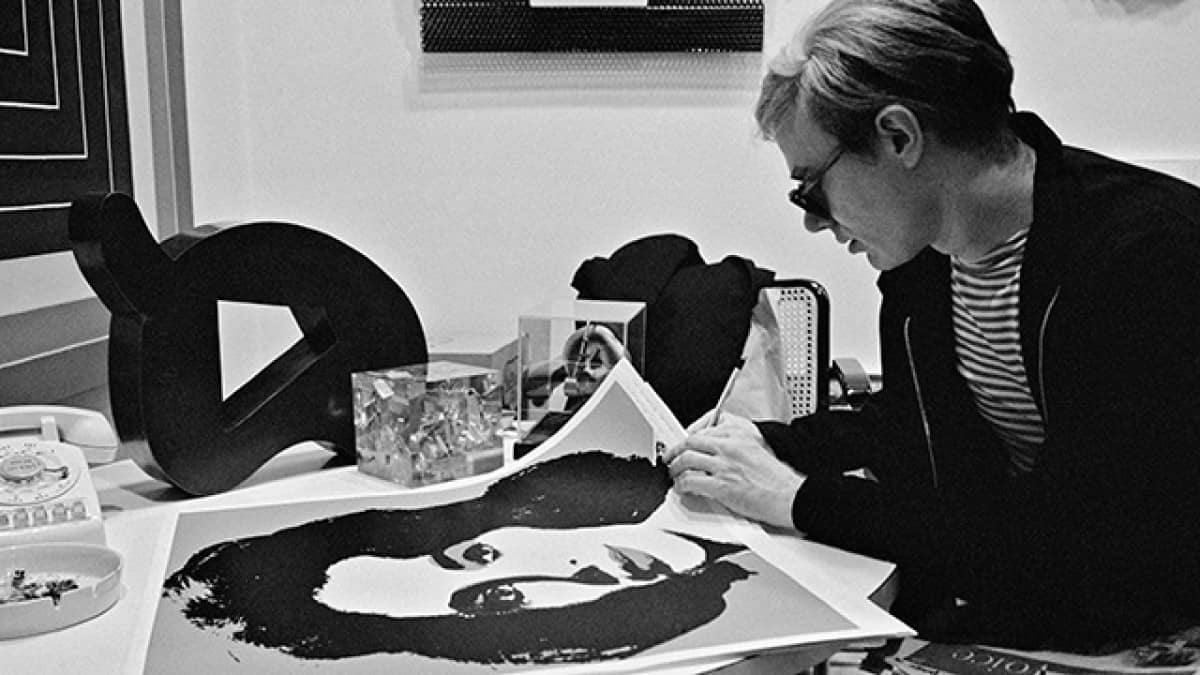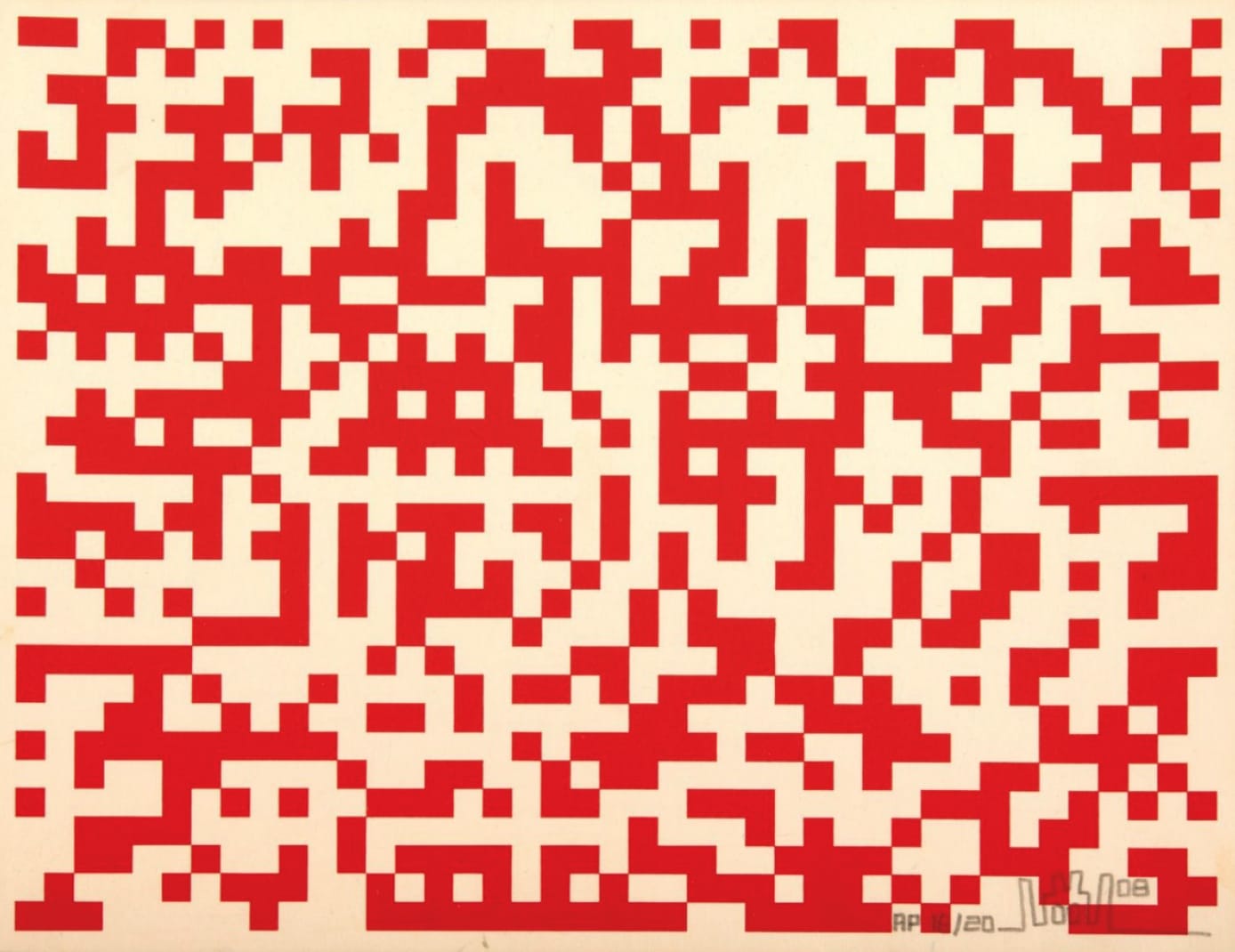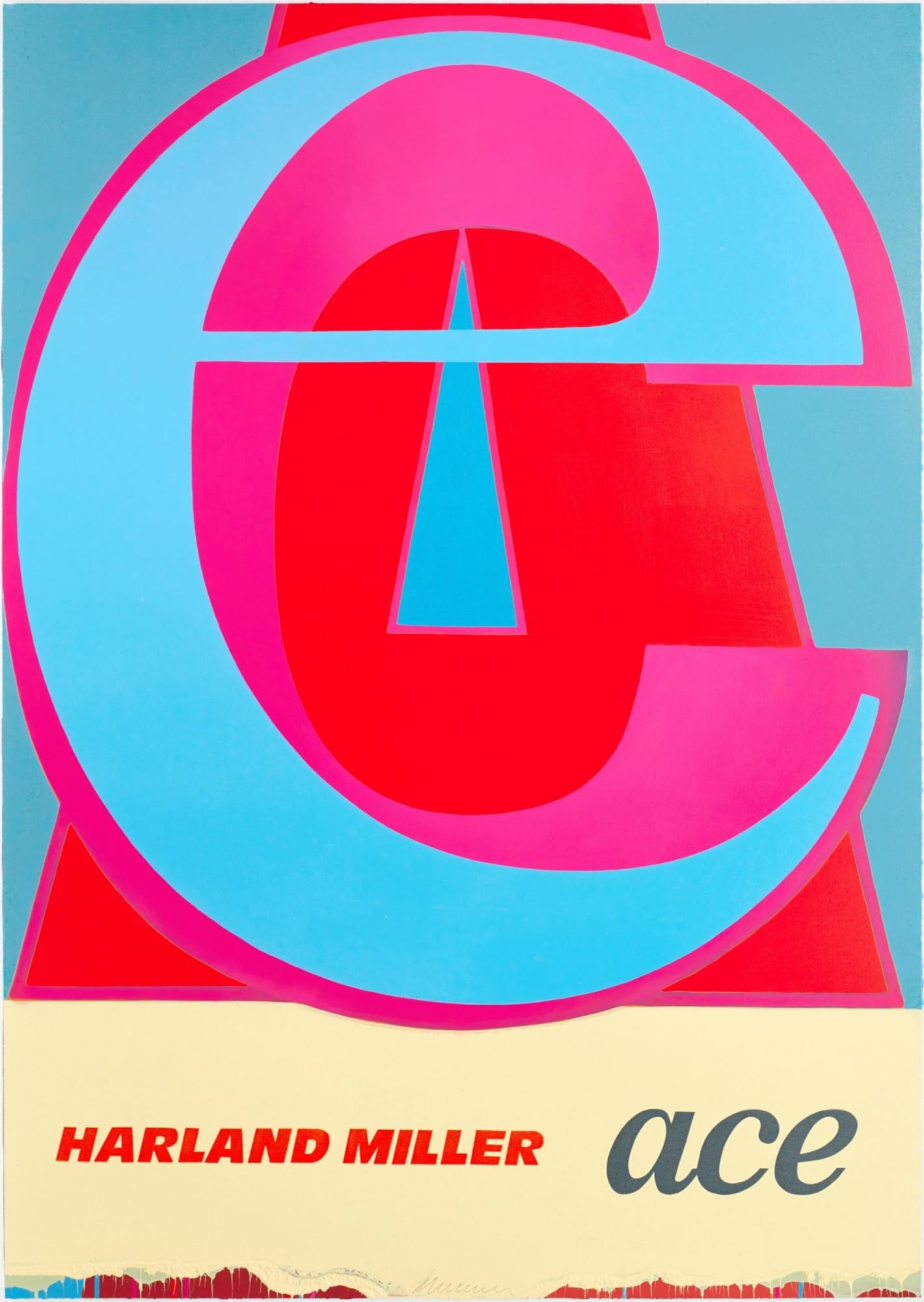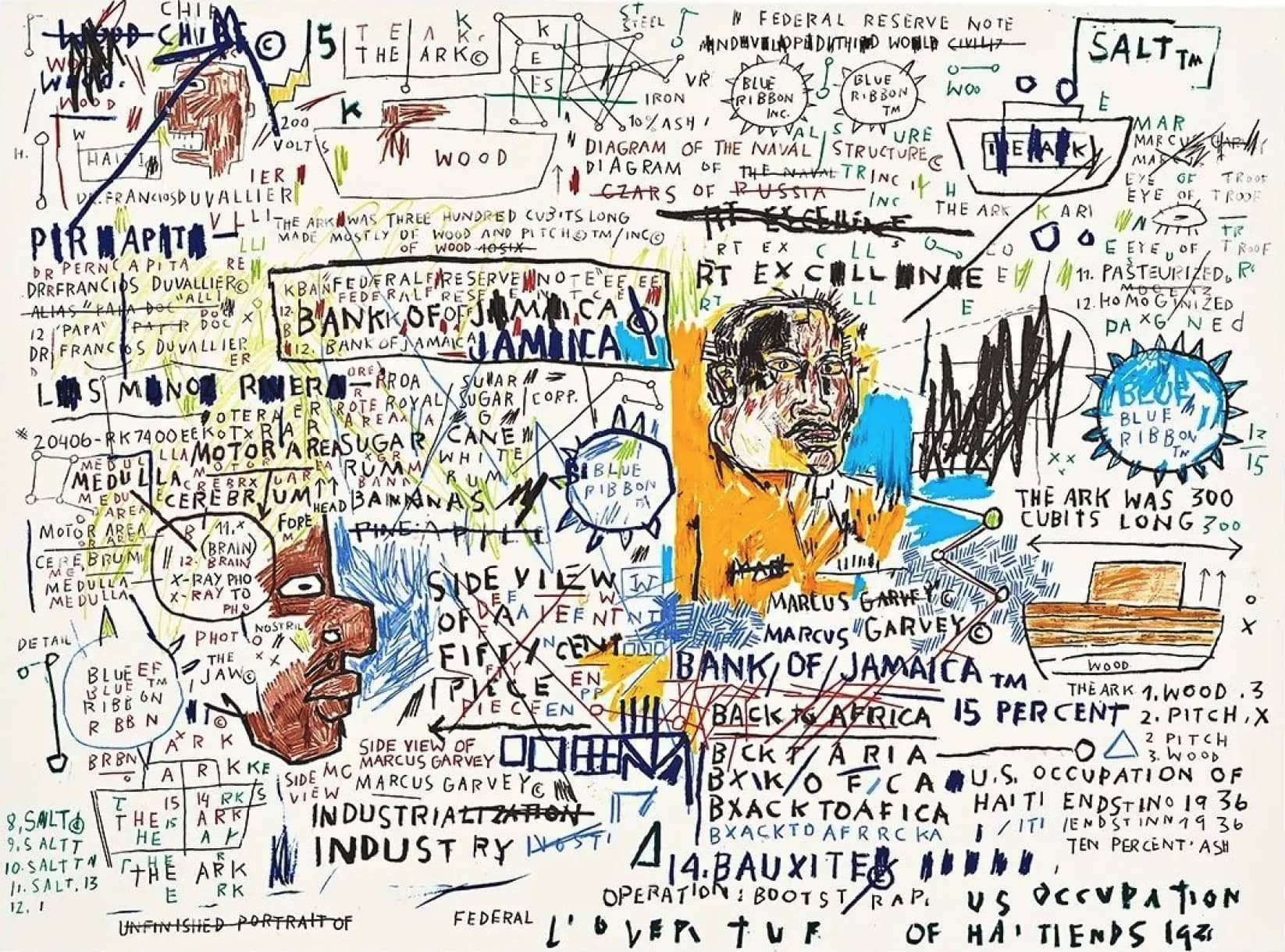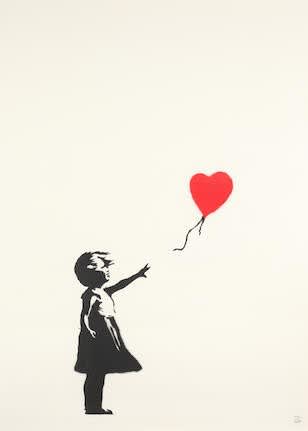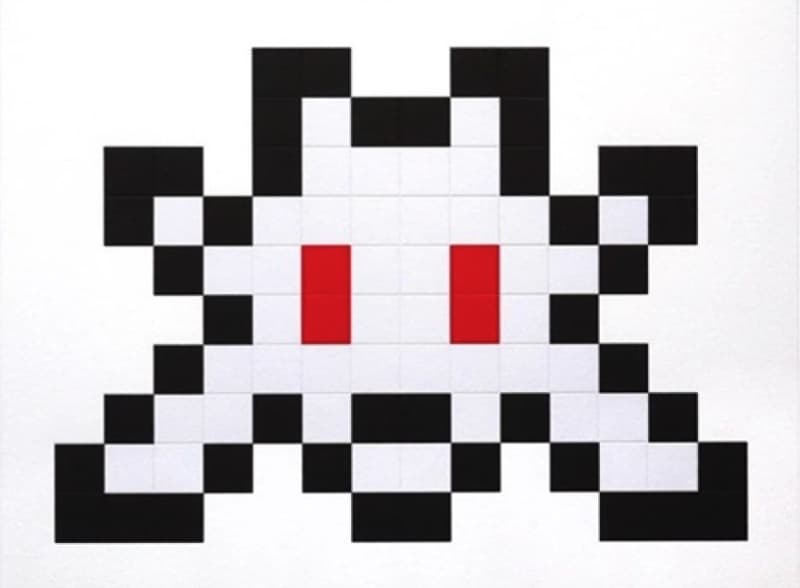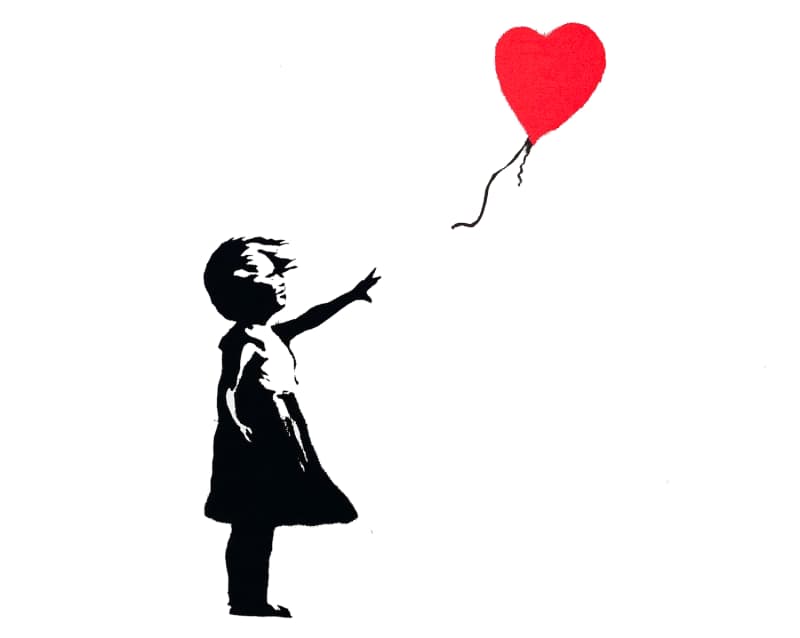From breaking down key terminology to offering industry insight, we provide you with all the information you need to know before buying a print or multiple.
With the print market on the rise, there have been several factors that have contributed to its success. From its affordable price point to the ease of being able to buy it online, the universal demand for prints is rising higher than ever. In order to help you navigate acquiring art’s most collectable medium, we have created a guide that explains everything you need to know about the art form and its widespread appeal.
What is a print and what are the different types?
A print is an artwork created in multiple iterations, that is made by any method involving transfer from one surface to another. There are many different types of prints, each created using a different method. Some of the best-known printing techniques include screen prints, lithographs, etching and woodcut.
The Different Types Explained
SCREEN PRINT: Probably the most common of the processes, screen printing is a variety of stencil printing that uses a screen made from fabric, often silk. First developed in the United States in the 1920s, Andy Warhol is renowned for popularising the medium during the 1960s with the rise of pop art. Screen printing is unique to other methods as existing photographs and imagery can be transferred in a process known as photo-screen printing, which was central to Warhol’s style. Many artists today continue to create screen prints including Banksy, STIK and KAWS.
LITHOGRAPH: Invented in the 18th century, lithography is a printing process that utilises the repelling properties of water and oil. Drawing the image on flat stone or metal plate, the negative space of the area is coated in oil or grease, making it ink-repellent. The plate is then covered in ink and transferred on to the printing surface. The process is commonly considered the most difficult printmaking method and the results completely vary depending on the artist’s own unique approach, meaning that lithographs can often look like etchings, woodcuts or screen prints. However, as each layer of colour is added separately, the process is much more time consuming. Takashi Murakami, Shepard Fairey and Richard Prince commonly use this method.
ETCHING: Known as one of the most common intaglio techniques, etching emerged in Europe in the early 16th century. The process involves the carving of an acid-resistant plate to reveal the metal underneath, which is then treated and coated in ink. The plate is then pressed against the paper and passed through a printing press. Etching is especially unique because it reveals the marks and lines drawn by the hand of the artist themselves, often creating prints that are visually similar to a drawing or sketch. Well-known artists who used this process include Pablo Picasso, Louise Bourgeois, Lucian Freud and Henri Matisse.
WOODCUT: Originating from the 12th century in Europe, woodcut is the oldest printmaking process. An image is carved on to a block of wood and the raised portions of the block are then coated with ink and transferred on to paper. The process often produces artworks that are saturated in tone, at times even appearing inky due to the heavy coating of the pigment. Woodcut printing is still popular today with artists like Donald Judd, Damien Hirst and Roy Lichtenstein creating works with this method.
What is the difference between editions, multiples and an artist proof?
By definition, prints are created in multiple iterations or ‘editions’, with each individual print from that series being labelled as a singular ‘edition’. The term ‘multiples’ describes three-dimensional works that are made in editions, for example KAWS’ Companion Figures. Alongside an edition of works, an artist may release an ‘artist proof’ or ‘A/P’. These are often identical to the standard edition but sometimes they can be made at an earlier stage in the printing process, meaning that the composition, colour or size can different, as they are trial works. Throughout his career, Warhol released many A/Ps in unique colour combinations that were one of a kind and these are now considered some of the most valuable on the market.
Why do people collect prints?
Compared to other mediums, prints are affordable. They are both a great way for new collectors to start acquiring art and for established collectors to acquire big names at a more reasonable price. In addition to their price point, the ease of acquiring and authenticating prints has meant that with the rise of buying art online, prints have become even more desirable.
JEAN MICHEL BASQUIAT, 50 CENT PIECE, 1983/2020
If the work isn’t signed, does that matter?
In short, no - as long as your print is authenticated or bought directly from an artist's studio then a signed edition is not essential. In fact, over the course of 2020, unsigned prints by Banksy actually increased in value more than their signed counterparts. Although a signature on a print will often increase the worth of an edition, as a result of the Banksy market’s rapid growth, signed prints by the anonymous street artist became so valuable they could only be purchased by the rare few. This meant that his unsigned prints, which at first were relatively affordable, soon became highly coveted and consequently, rose in value.
BANKSY, GIRL WITH BALLOON, 2004
